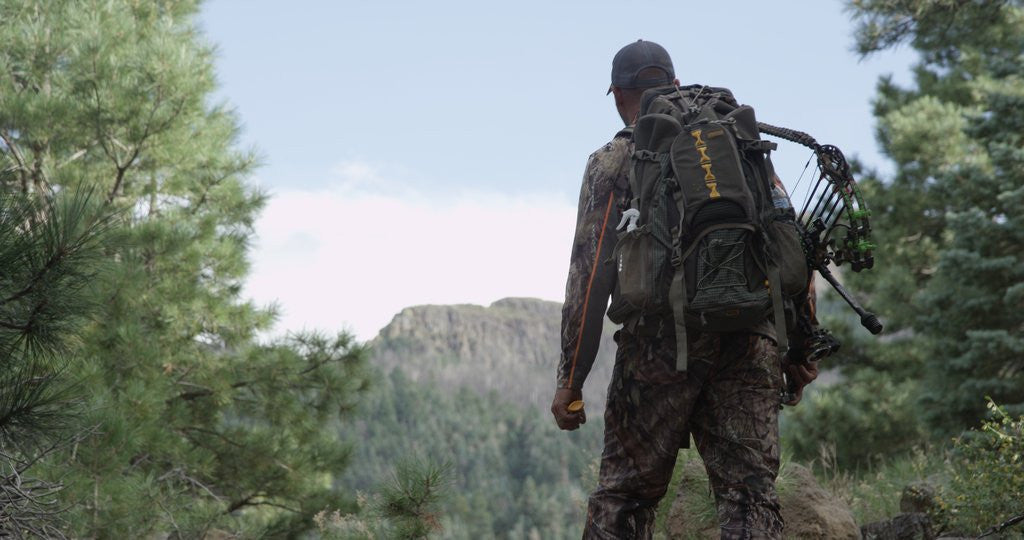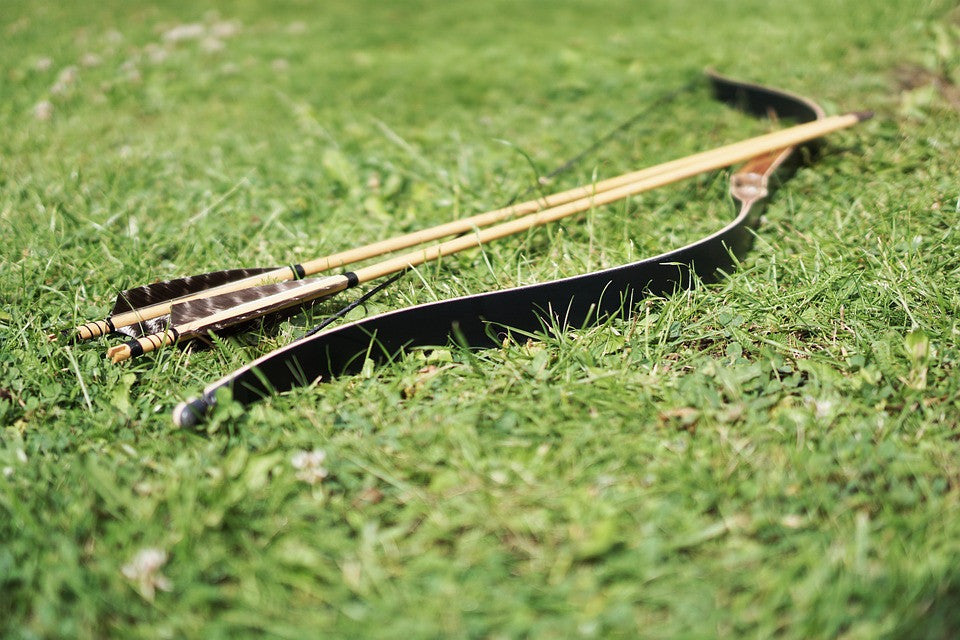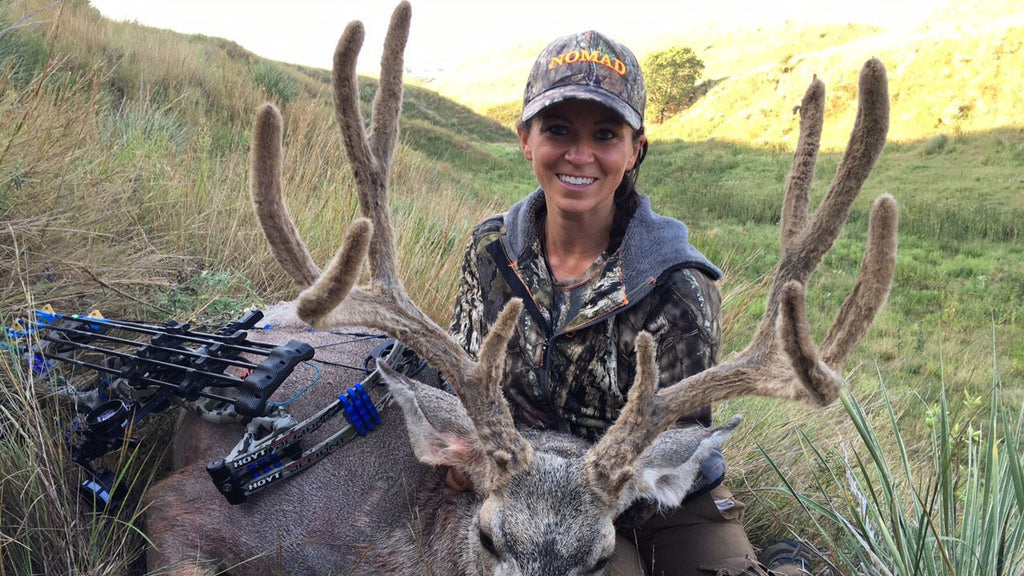
Although it can take a lifetime to master, bowhunting can be extremely rewarding. You’ll be surprised how quickly the bow will begin to feel like an extension of your body. Even if you use the most sophisticated compound bow available, you’ll still feel a primal connection with the hunters who came before you. After all, NOMADs have been feeding their families with bows for far longer than with high-powered rifles and commercially produced tree stands. Feeling the urge and ready to learn to bow hunt? Use this comprehensive guide to bowhunting for beginners.
Gear Up with Nomad Hunting ClothesBowhunting Gear
While you can use a variety of 21st century accessories to enhance your hunting skills, one of the great things about bowhunting for beginners is that you don’t need a heck of a lot to get started. For the most part, you’ll simply need a high-quality bow and an assortment of arrows with tips. However, most bowhunters find a sighting system and mechanical releases to be helpful as well.
Best Bows for Beginners

While hunting bows are made in many different styles and configurations, most popular bows fall into one of two categories: recurve or compound. Unlike compound bows, which are relatively recent inventions, recurve bows have been used by archers for hundreds of years. They are quite simple in design, and feature little more than a pair of curved limbs, a handle, and a bow string connecting the terminal ends of each limb.
Compound bows, on the other hand, feature a system of pulleys and a bow string that snakes between them, rather than the simple, point-A-to-point-B bowstrings of recurve bows. These pulleys help drastically reduce the amount of force required to draw back the string, once it has been pulled about half-way back. With this assisted pull or let off, compound bows may be a great option when learning to bow hunt, as they’ll help you get used to the strength required for the draw.
While you have to hold the full draw-weight of a recurve bow while aiming, you must only hold a fraction of a compound bow’s draw-weight while aiming. Because a heavy draw-weight generally increases both distance and accuracy, compound bows often have heavier draw-weights than recurve bows do.
Bowhunting Arrows and Tips

You’ll need a dozen arrows or so to get started (maybe more if you haven’t quite gotten your aim down yet). While arrow shafts were historically made from lightweight woods and vanes from feathers, aluminum, carbon and plastics are the materials of choice for modern bowhunters. Our advice when it comes to bowhunting for beginners is to be sure to check the draw-length and draw weight of your bow when deciding on the proper arrows to purchase. You’ll want to use field point tips for target shooting, but once you are ready to hunt, you’ll want broad-headed tips.
Bow Sights
While ancient bowhunters hunted without the aid of sights, as a beginner, you’ll surely appreciate the assistance that a sight can provide. Comprised of one or more pins attached near the handle of the bow, sighting pins allow you to draw an imaginary line between your eye, the sight pin and your target. Most sighting systems feature several pins, as your point of aim changes depending on the distance to your target.
Mechanical Releases
Mechanical releases hold the bowstring while you draw back—then they release it quickly and evenly when you engage a trigger. Releases help improve your accuracy, as they release each arrow the same way. They also help to save some wear and tear on your fingers, which may grow sore after spending an hour or two shooting—especially if you haven’t built up the callouses of a seasoned bowhunter.
Bowhunting Techniques
One of the first steps as you learn to bow hunt will be to become a skilled archer. Although you’ll spend the next several decades honing your skills and perfecting your craft, firing an arrow is actually a simple skill to learn. Simply nock the arrow on the bowstring, while placing the shaft on the arrow rest. Hold the bow lightly but securely in your off hand, while gripping the bowstring and arrow with your strong hand (or the mechanical release). While keeping your back straight, raise the bow in front of you and pull back on the bowstring. Align your eye with the arrow, sight pin and target—then release the arrow.
Most bowhunters prefer to hunt from treestands, as it provides an elevated shooting position and keeps you out of your quarry's eye line. However, you can stalk the game animal on foot or set up a ground-level blind if you prefer.
Popular Bowhunting Game

Because bows have an effective range of about 50 yards or so, you’ll have to get very close to your intended target species when bowhunting. Nevertheless, you can use a bow to hunt just about anything you could hunt with a rifle or shotgun. However, bowhunters generally target a handful of species more than others.
Some of the most frequent targets of bowhunters include whitetails, mule deer, elk, bear and turkey. But very skilled bowhunters often use a bow to hunt animals as large as moose or as wary as coyotes! Those with sniper-like accuracy may even have success bowhunting for squirrels or rabbits. Bowhunting for beginners offers a wide range of options. Gauge your skill level, and take on whichever species you feel most comfortable with.
Gear Up For Success
Because stealth is imperative for bowhunting success, consider equipping yourself with high performance hunting clothing from Nomad Outdoor. Our gear is designed to blend in to your local forests and fields and features advanced technology like scent protection to help you stay under the radar.


















